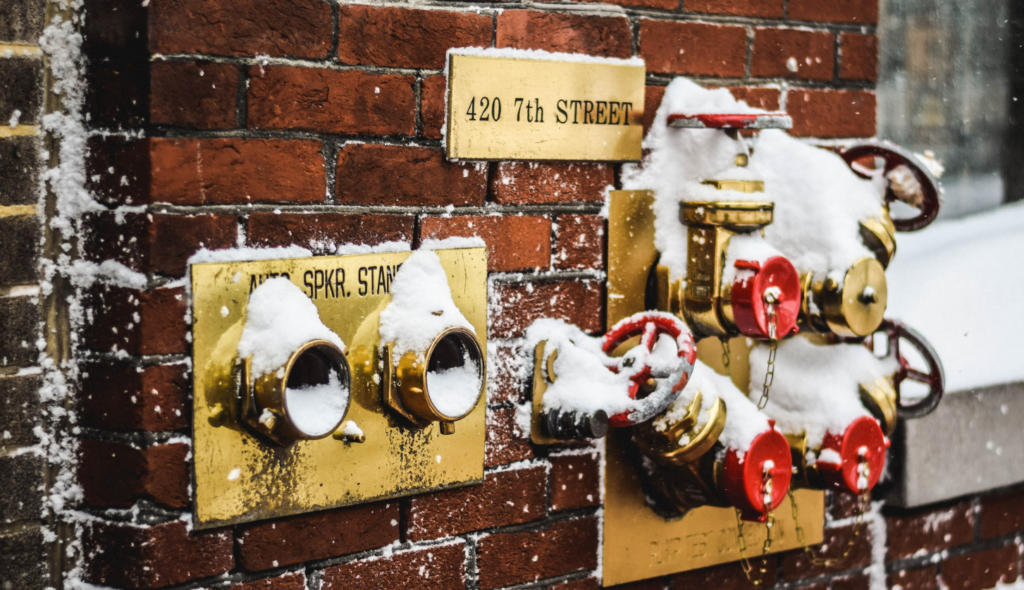As the days grow shorter and the temperatures drop, it’s crucial for homeowners to prepare their homes for the challenges that winter can bring. One of the most common and potentially costly problems during the cold season is frozen pipes. When water inside your plumbing system freezes, it can lead to burst pipes, extensive damage, and significant repair bills. But fear not, for with some simple preventative measures, you can keep your pipes in working condition throughout the winter. In this article, we’ll provide you with the knowledge and strategies you need to prevent frozen pipes and enjoy a trouble-free winter.
Why Worry About Frozen Pipes?
Costly Repairs: Frozen pipes can lead to extensive damage and costly repairs when they crack, burst, or rupture. The damage isn’t confined to the pipes themselves; it can also affect surrounding structures, walls, flooring, and belongings.
Preserve Indoor Air Quality and Health: Frozen pipes can cause leaks and water damage, creating an environment conducive to mold and mildew growth. Mold and mildew can compromise indoor air quality and pose health risks, particularly to individuals with respiratory conditions, allergies, or weakened immune systems.
Sustain Property Value and Insurance Premiums: Maintaining your property in good condition is vital for preserving its value. Water damage resulting from frozen pipes can significantly decrease the value of your home and affect its resale potential. Additionally, repeated claims due to frozen pipe incidents can lead to increased insurance premiums.
Safety Concerns: Last but not least, burst pipes can cause a major safety concern as they can lead to flooding, potential electrical hazards, and severe long-term structural damage.
Tips to Prevent Frozen Pipes
Disconnect and Drain Outdoor Hoses
Outdoor hoses are particularly susceptible to freezing and can cause damage to both the hoses and the indoor plumbing if not properly prepared. Before winter arrives, disconnect all outdoor hoses from their spigots and drain any remaining water. Hoses left connected can cause water to freeze and back up into the indoor pipes, potentially leading to freezing and bursting. Store the drained hoses in a warm indoor space to keep them in good condition for future use.
Maintain a Constant Temperature
Consistency in indoor temperature, especially during the night, is vital. Set your thermostat to a moderate temperature and avoid drastic fluctuations. Even when you’re away, do not lower the thermostat to a temperature that could expose your pipes to freezing conditions. A steady temperature helps to keep the environment around the pipes warm, reducing the risk of freezing.
Insulate Exposed Pipes
Proper insulation is paramount in keeping your pipes from freezing. Identify vulnerable pipes, especially those in unheated or poorly insulated areas like basements, attics, crawl spaces, and garages. Utilize pipe insulation sleeves or wraps to create a barrier against the cold. Insulation helps in retaining the heat within the pipes, preventing freezing even during severe cold spells.
Open Cabinet Doors
During cold winter nights, opening cabinet doors can make a significant difference in preventing freezing pipes, especially in kitchens and bathrooms where plumbing is often located within cabinets. When you open the cabinet doors, the warm air from the room can circulate around the pipes, helping to maintain a higher temperature and prevent freezing. Make sure to open all cabinet doors that conceal plumbing, allowing the heat to reach and surround the pipes.
Let Faucets Drip
On extremely cold nights, allowing faucets to drip slightly can be a lifesaver. This technique relieves pressure within the pipes, making it harder for them to freeze. Moving water is less likely to freeze compared to stagnant water. Opening a faucet slightly to let water flow can be an effective preventative measure, particularly for pipes located along exterior walls.
Seal Gaps and Cracks
Inspect your home for any gaps, cracks, or openings in walls, floors, and ceilings near water pipes. These openings can allow cold air to enter and potentially freeze the pipes. Seal these gaps using caulking or insulation to keep the cold out and the warmth in. By doing so, you create a more controlled environment for the pipes, reducing the risk of freezing.

